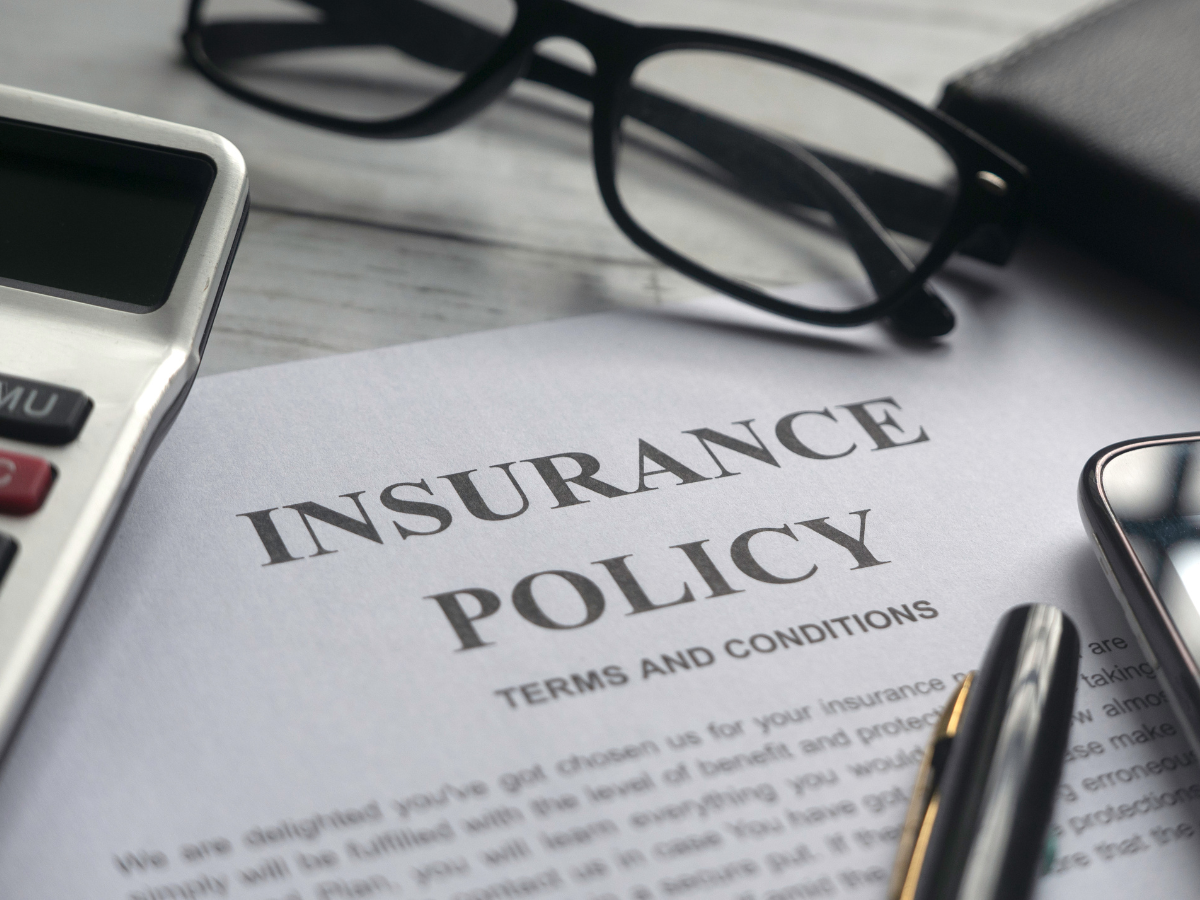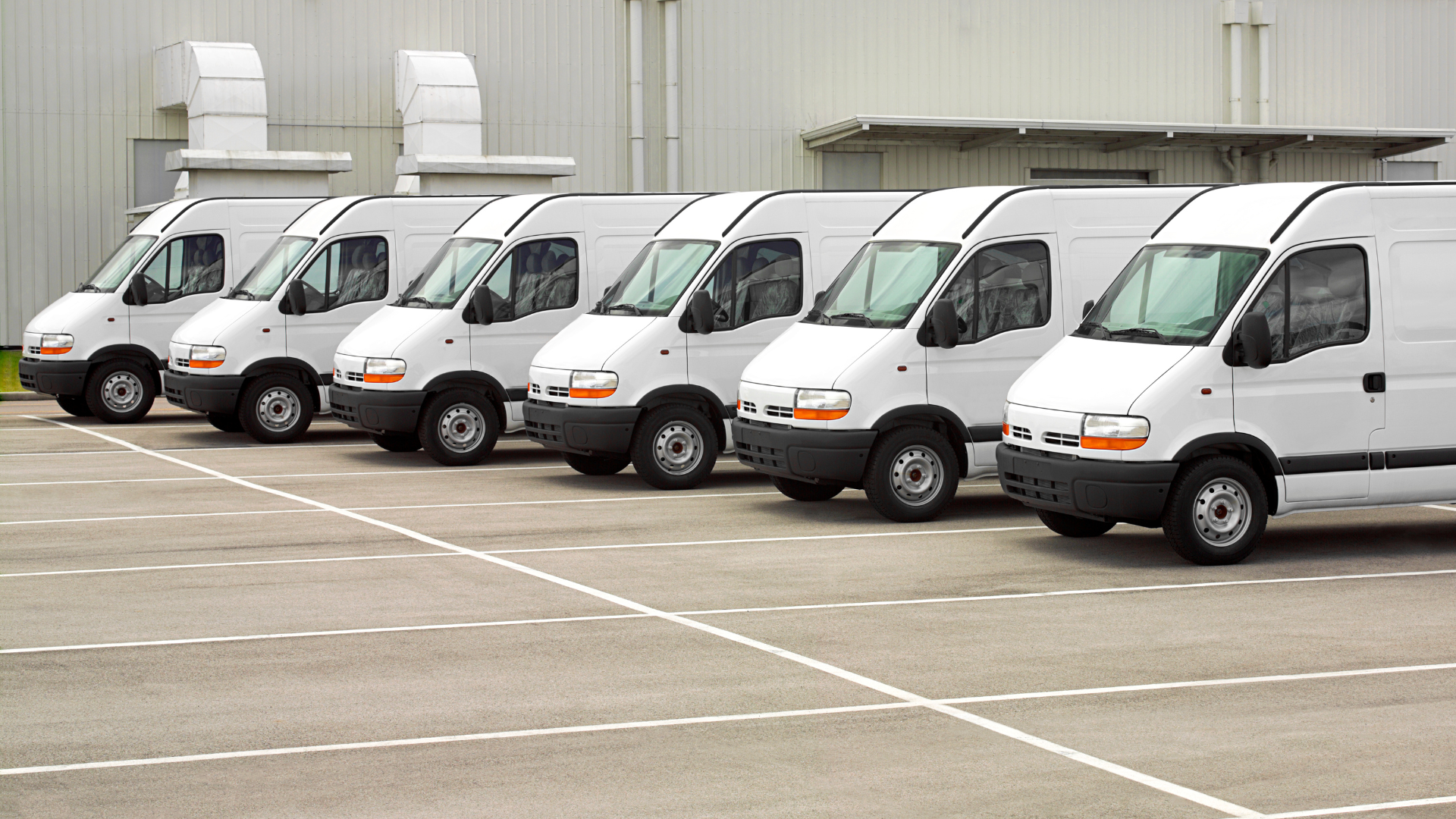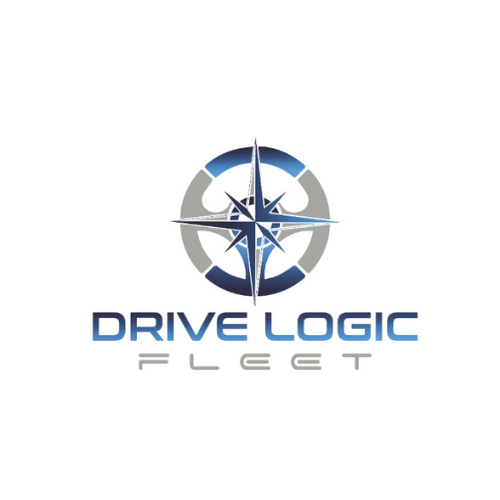Blog
Blog

By iCar Ride
•
April 3, 2025
Why Commercial Insurance Matters for Fleet Owners If you're running a transportation business, having the right commercial auto insurance is essential. Unlike personal auto insurance, commercial coverage protects your vehicles, drivers, and passengers in case of accidents, property damage, or liability claims. However, many fleet owners find themselves overpaying due to lack of knowledge, bad policies, or unnecessary add-ons. The good news? You can get affordable commercial auto insurance without sacrificing coverage. Here’s how. 1. Understand the Different Types of Commercial Auto Insurance Insurance companies offer multiple coverage options —some are necessary, while others may not be worth the extra cost. Knowing what you actually need can help cut costs without exposing your business to unnecessary risks. ✅ Essential Coverages: Liability Insurance – Covers property damage and injuries caused by your drivers. Collision Coverage – Pays for vehicle repairs after an accident. Comprehensive Coverage – Covers non-accident damage (theft, vandalism, weather). Uninsured/Underinsured Motorist Coverage – Protects you if another driver causes damage but has no insurance. ❌ Optional Coverages That May Not Be Necessary: Roadside Assistance – If you already have a fleet maintenance plan, this may be redundant. Rental Reimbursement – Consider self-insuring if you have backup vehicles. Personal Injury Protection (PIP) – If your drivers already have medical coverage, this could be unnecessary. Tip: Talk to an insurance specialist to customize a plan that meets legal requirements but eliminates unnecessary add-ons. 2. Compare Multiple Insurance Providers One of the biggest mistakes fleet owners make is sticking with one provider without shopping around. Prices vary between insurance companies based on factors like your business size, location, and accident history. 📌 How to Compare Insurance Rates Effectively: Get at least three quotes from different providers. Look for fleet-specific policies rather than generic commercial auto insurance. Ask about bulk discounts for insuring multiple vehicles under one policy. Check customer reviews to ensure good claims service and support. Tip: Work with an independent insurance broker who specializes in fleet insurance—they can find you better rates and negotiate on your behalf. 3. Improve Your Fleet’s Risk Profile to Lower Costs Insurance companies determine your premium based on how risky your business appears. Lowering your risk profile can significantly reduce your rates. 🚘 Ways to Reduce Risk & Save on Premiums: Hire Experienced Drivers – A good driving record lowers insurance costs. Implement a Safety Training Program – Many insurers offer discounts for businesses with formal driver training programs. Use GPS & Telematics – Tracking driver behavior helps lower accident risks, which can lead to insurance discounts . Maintain Your Fleet Regularly – Well-maintained vehicles reduce accidents and claims. Tip: Ask your insurance provider if they offer "Safe Fleet" discounts for businesses with telematics and training programs. 4. Opt for Higher Deductibles to Lower Monthly Costs A deductible is the amount you pay out-of-pocket before your insurance covers a claim. Choosing a higher deductible can significantly reduce your monthly premiums. 📊 Example: A $500 deductible may result in higher monthly payments , but lower out-of-pocket costs in case of a claim. A $1,500 or $2,500 deductible means lower monthly payments , but you’ll pay more upfront if an accident happens. ✅ Best Strategy: If your business has cash reserves to cover minor repairs, opt for a higher deductible to save money long-term. 5. Bundle Insurance Policies for More Savings Many insurance providers offer discounts when you bundle multiple policies together. Instead of buying separate policies for general liability, worker’s compensation, and commercial auto, combine them with one provider for bulk savings . 🔥 Policies to Bundle: Commercial auto insurance General liability insurance Workers' compensation insurance Umbrella coverage Tip: Some providers offer up to 15-20% discounts when bundling multiple policies together. Always ask about bundle options. Final Thoughts: Save Money Without Cutting Coverage Getting commercial insurance for your fleet doesn’t have to break the bank. By understanding your coverage needs, comparing providers, reducing risk, choosing the right deductible, and bundling policies , you can save thousands of dollars annually without sacrificing protection . 🚗💼 Need expert help choosing the right insurance for your fleet? Work with a transportation consultant who understands the industry and can connect you with the best coverage at the lowest price.

By Bernadette VA
•
March 27, 2025
Growing a transportation business requires more than just adding vehicles—it demands strategic planning, efficiency, and cost management. To maximize your fleet's profitability, you need to focus on pricing models, route optimization, and expense control. Here are five proven strategies to help your transportation company increase revenue and reduce costs. 1. Implement Dynamic Pricing Models A one-size-fits-all pricing structure can limit your profitability. Instead, using dynamic pricing models allows you to charge based on demand, distance, and service type. Key Strategies: Demand-Based Pricing: Adjust your rates during peak hours, special events, or high-demand seasons to increase revenue. This is especially effective for shuttle and private tour services. Distance and Time Rates: Instead of flat rates, charge based on mileage and duration. This ensures you're covering fuel, labor, and wear-and-tear costs. Tiered Service Pricing: Offer multiple service levels (standard, premium, luxury) with different pricing structures to appeal to a broader market. ✅ Tip: Use fleet management software with real-time data to automate and optimize dynamic pricing based on current market conditions. 2. Optimize Routes with Technology Inefficient routes lead to wasted fuel, increased labor costs, and lower profits. By optimizing your routes, you can reduce travel time, fuel usage, and vehicle wear. Route Optimization Tips: Use GPS and Route Optimization Software: Tools like Samsara, Route4Me, or Verizon Connect analyze traffic patterns and identify the fastest, most fuel-efficient routes. Batch and Consolidate Trips: Combine multiple pickups and drop-offs into one trip to maximize vehicle usage and reduce empty miles. Use Data for Real-Time Adjustments: Adjust routes on the fly to avoid traffic delays or road closures, keeping your vehicles productive. ✅ Tip: Route optimization can reduce fuel consumption by up to 20% , significantly boosting profitability. 3. Control Fuel and Maintenance Costs Fuel and maintenance are two of the largest expenses for transportation companies. Managing these costs effectively directly impacts your bottom line. Fuel-Saving Strategies: Regular Vehicle Maintenance: Well-maintained vehicles run more efficiently, consume less fuel, and reduce costly breakdowns. Driver Efficiency Training: Teach drivers to avoid idling, hard braking, and rapid acceleration, which all increase fuel consumption. Fuel Cards and Tracking: Use fuel cards to monitor and control fuel expenses. Some programs offer rebates and discounts, improving cost efficiency. Maintenance Best Practices: Scheduled Preventive Maintenance: Routine servicing helps avoid expensive repairs and extends vehicle lifespan. Telematics Monitoring: Use telematics systems to track vehicle health, flagging issues before they become costly problems. ✅ Tip: Proactive maintenance can reduce overall repair costs by up to 25% and extend the lifespan of your fleet vehicles. 4. Streamline Operations with Fleet Management Software Fleet management software automates administrative tasks, improves scheduling, and tracks expenses, leading to more efficient operations. Benefits of Fleet Management Software: Real-Time Vehicle Tracking: Monitor location, routes, and driver behavior to improve operational efficiency. Automated Scheduling and Dispatching: Reduces manual errors and ensures optimal vehicle utilization. Expense and Maintenance Tracking: Keep accurate records of fuel usage, repairs, and overall expenses to identify cost-saving opportunities. ✅ Tip: Streamlining operations with software can cut administrative costs by 30% and improve overall fleet efficiency. 5. Diversify Revenue Streams Expanding your service offerings increases income potential and protects your business from seasonal slowdowns. Revenue Diversification Ideas: Corporate Contracts: Secure long-term corporate transportation contracts for steady income. Event and Group Transportation: Offer services for weddings, conferences, or events to generate additional revenue. Partnerships with Hotels or Travel Agencies: Collaborate with hospitality businesses to provide shuttle services and attract more clients. Specialty Services: Expand into Non-Emergency Medical Transportation (NEMT) or airport transfers, which offer consistent demand and higher profit margins. ✅ Tip: Diversifying revenue streams makes your business less vulnerable to market fluctuations and boosts overall profitability. Conclusion: To maximize the profitability of your fleet, you need to focus on dynamic pricing, route optimization, cost control, operational efficiency, and revenue diversification . By implementing these proven strategies, you’ll reduce expenses, increase revenue, and build a more resilient and profitable transportation business. If you’re ready to take your fleet to the next level, consider partnering with a transportation consultant to optimize your operations and develop a custom profitability plan.

By iCar Ride
•
March 24, 2025
Buy or Lease? The Best Strategy for Growing Your Fleet! When expanding your transportation business, one of the most critical decisions you'll face is whether to buy or lease vehicles. Both options have their own financial and operational advantages, and the best strategy depends on your business goals, budget, and growth plans. This guide breaks down the pros and cons of buying versus leasing to help you make the most profitable decision for your fleet. 1. Buying Your Fleet: Pros and Cons ✅ Advantages of Buying Ownership and Asset Value: When you buy vehicles, you build equity. Once the loan is paid off, you own the vehicles outright, making them assets on your balance sheet. Unlimited Mileage: Purchased vehicles come without mileage restrictions, which is ideal for high-use transportation services such as shuttle, taxi, and NEMT operations. Tax Benefits: You can claim tax deductions on vehicle depreciation, loan interest, and maintenance costs, reducing your overall tax liability. Customization Flexibility: As the owner, you can customize your vehicles with branding, specific features, or luxury upgrades without restrictions. ❌ Disadvantages of Buying Higher Upfront Costs: Purchasing vehicles requires a significant initial investment or loan, which can strain cash flow. Maintenance and Repairs: As vehicles age, you’ll be responsible for all repair and maintenance expenses. Depreciation: Vehicles lose value over time, reducing their resale potential. 2. Leasing Your Fleet: Pros and Cons ✅ Advantages of Leasing Lower Initial Costs: Leasing requires a smaller upfront payment and typically lower monthly payments compared to purchasing, which helps you preserve cash flow. Newer Vehicles: Leasing allows you to access newer vehicles with the latest technology, fuel efficiency, and safety features without the long-term commitment. Reduced Maintenance Costs: Most lease agreements cover maintenance and repairs, reducing your overall expenses. Tax Benefits: Lease payments are generally tax-deductible as business expenses, lowering your taxable income. ❌ Disadvantages of Leasing Mileage Limits: Leases typically include mileage caps, which may not be suitable for high-mileage transportation services. No Asset Ownership: Leasing means you do not own the vehicles, so you miss out on potential resale value. Ongoing Payments: You will always have recurring monthly payments without ever owning the vehicles. 3. Key Factors to Consider When Choosing Between Buying and Leasing ✅ Fleet Size and Usage: If you operate a high-mileage fleet (e.g., shuttle or NEMT), buying may be more cost-effective in the long run. For smaller fleets or luxury transportation services, leasing offers flexibility and access to newer vehicles. ✅ Cash Flow and Financing: Leasing is ideal if you want to preserve capital for marketing, staffing, or expansion efforts. Buying is preferable if you have the financial stability to handle higher upfront costs. ✅ Long-Term Business Goals: If you plan to expand and sell your fleet later, owning vehicles adds asset value to your business. If you prioritize keeping a modern, reliable fleet without the hassle of selling older vehicles, leasing is a better option. 4. Hybrid Approach: Combining Buying and Leasing Many fleet owners adopt a hybrid model by purchasing core, high-use vehicles while leasing premium or seasonal-use vehicles. This strategy offers a balance of asset ownership and flexibility. 5. Final Recommendation: Which Strategy is Best for Your Fleet? Buy if: You prioritize asset ownership, plan for long-term stability, and operate high-mileage vehicles. Lease if: You want lower upfront costs, access to newer vehicles, and the flexibility to upgrade regularly. Conclusion: The decision to buy or lease vehicles for your fleet depends on your financial goals, operational needs, and long-term business strategy. Carefully assess your cash flow, mileage needs, and growth plans before making your decision. If you're unsure which strategy is best for your transportation business, consider consulting with a fleet management expert to develop a tailored plan that maximizes profitability and sustainability.

By Eddie Montiel
•
March 8, 2025
As a fleet owner, structuring your business as a corporation offers several financial and legal advantages. Many rideshare drivers transitioning into fleet ownership may not realize the long-term benefits of incorporating their business. Below are key reasons why setting up a corporation can be a game-changer for your transportation business.

By Eddie Montiel
•
March 8, 2025
Starting a small transportation company can be a lucrative venture, but choosing the right business model is crucial for long-term profitability. Whether you're transitioning from rideshare driving, expanding a taxi business, or launching a shuttle service, selecting the most efficient and scalable model can make all the difference. Below, we explore the most profitable transportation business models and how you can maximize earnings.
Educational Resources Hub
Explore valuable content designed to help you grow your fleet business and stay ahead of the competition.
Resource Categories:
Blog Articles (Fleet Tips, Financing Advice)
Case Studies (Success Stories)
Downloadable Guides
Contact us at:
drivelogicfleet@gmail.com
icarridetransportation@gmail.com

